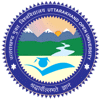|
Ch 1: Technology Framework in e-Learning
- 1.1: Introduction
- 1.2: Technology Analysis
- 1.3: Appropriate Technology
|
|
Ch 2: Learners Profile Analyze
- 2.1: Resources Availability At Learner's End
- 2.2: Selection of Technology To Match Resources
- 2.3: Meeting Objectives
|
|
Ch 3: Available Tools & Technologies for Delivering e-Content
- 3.1: Approaches for delivering e-Content.
- 3.2: Multimedia Learning Resources.
- 3.3: Technologies in Textual Deliveries.
- 3.4: Audio Technologies & Tools
- A) Audio File Formats
- B) Compression Techniques
- C) Audacity Audio Tool
- 3.5: Video Technologies & Tools
- A) File Formats
- B) Compression techniques
- C) Techniques by Easynow
|
|
Ch 4: Structuring & Presenting e-Content
- 4.1: Structuring content based on pedagogical concepts
- 4.2: Presenting content in different output formats
- 4.3: Authoring tools to create and manage content
- 4.4: Comparing eLML to other markup languages
- 4.5: Usability and marketing studies
|
|
Back To Course 5
|
|
Chapter 3.3 - Technologies in Textual Deliveries
2. Moodle
Moodle is a software package for producing Internet-based courses and web sites. It is a global development project designed to support a social constructionist framework of education.
Moodle is a Course Management System (CMS), also known as a Learning Management System (LMS) or a Virtual Learning Environment (VLE). It is a Free web application that educators can use to create effective online learning sites. Moodle is provided freely as Open Source software (under the GNU General Public License). Basically this means Moodle is copyrighted, but that you have additional freedoms. You are allowed to copy, use and modify Moodle provided that you agree to: provide the source to others; not modify or remove the original license and copyrights, and apply this same license to any derivative work. Read the full license for details and please contact the copyright holder via the Moodle.com helpdesk if you have any questions.
Moodle can be installed on any computer that can run PHP, and can support an SQL type database (for example MySQL). It can be run on Windows and Mac operating systems and many flavors of Linux. There are many knowledgeable Moodle Partners to assist you, even host your Moodle site.
The word Moodle was originally an acronym for Modular Object-Oriented Dynamic Learning Environment, which is mostly useful to programmers and education theorists. It's also a verb that describes the process of lazily meandering through something, doing things as it occurs to you to do them, an enjoyable tinkering that often leads to insight and creativity. As such it applies both to the way Moodle was developed, and to the way a student or teacher might approach studying or teaching an online course. Anyone who uses Moodle is a Moodler.
For more information about moodle, please refer to below links:
http://en.wikipedia.org/wiki/Moodle
http://moodle.org
http://moodle.com
Next
|
|
